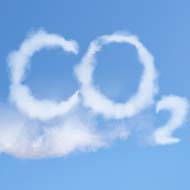RSPCA calls for urgent action on CO2 supplies

"The potential animal welfare impact of the ongoing shortage of CO2 for the stunning and slaughter for farm animals could have been appalling" - Chris Sherwood, RSPCA.
Any delay to reinstating supplies of carbon dioxide could be ‘catastrophic for animal welfare’, the RSPCA has warned.
The animal charity says ‘the sheer volume of animals’ the UK is farming and the ‘increasingly intensive methods of husbandry and slaughter’ leaves 'no safety net for animal welfare'.
The comments come after the UK Government announced plans to increase supplies of carbon dioxide.
Business secretary Kwasi Kwarteng announced on Tuesday (21 September) that the UK had reached an agreement with fertilser firm CF Fertilisers to ensure the continued supply of CO2 to UK businesses.
Fears had been raised that the shortage of CO2 could have a detrimental effect on animal welfare. The gas is used in the food industry to stun animals prior to slaughter.
RSPCA chief executive Chris Sherwood said: “The RSPCA welcomes the Government’s announcement that it is taking action to reinstate levels of CO2, the gas used to stun and kill farm animals at slaughterhouses, and urges them to ensure farming communities have enough supplies, quickly enough to resolve this urgent animal welfare crisis. Any delay to reinstating this supply could be catastrophic for animal welfare.
“The potential animal welfare impact of the ongoing shortage of CO2 for the stunning and slaughter for farm animals could have been appalling. We may have been in a situation where tens of thousands of pigs could have been shot on farms, without the appropriate facilities to ensure their welfare.
“For the hundreds of thousands of poultry, the potential scenario was shutting off the ventilation in their sheds, which is utterly unacceptable from a welfare perspective.
He continued: “This critical situation should also prompt us to be looking more closely at the ‘machinery’ of farming that we have created, and how we can ensure our husbandry systems are more resilient and protect the welfare of animals when issues like this emerge.
“The sheer volume of animals we are farming and the increasingly intensive methods of husbandry and slaughter mean there is no safety net for welfare. We need to learn lessons from this averted crisis and the one in 2018 and put robust back-up systems in place so there is resilience in supply chains and welfare is safeguarded.”



 The Federation of Independent Veterinary practices (FIVP) has announced a third season of its podcast, Practice Matters.
The Federation of Independent Veterinary practices (FIVP) has announced a third season of its podcast, Practice Matters.